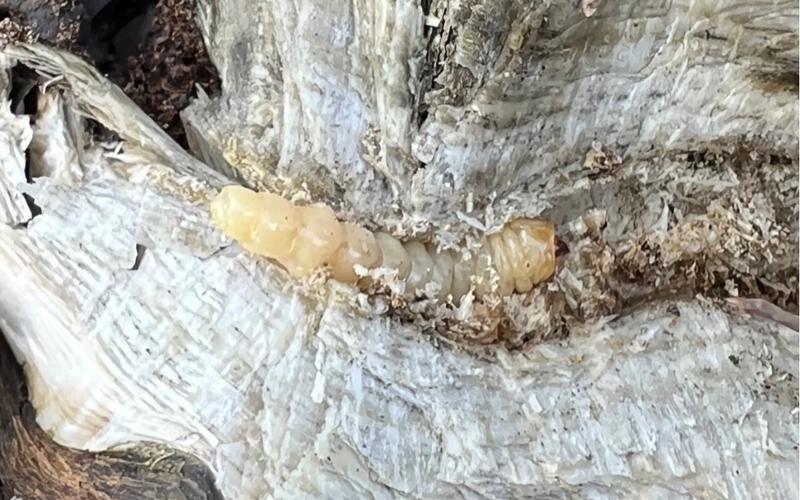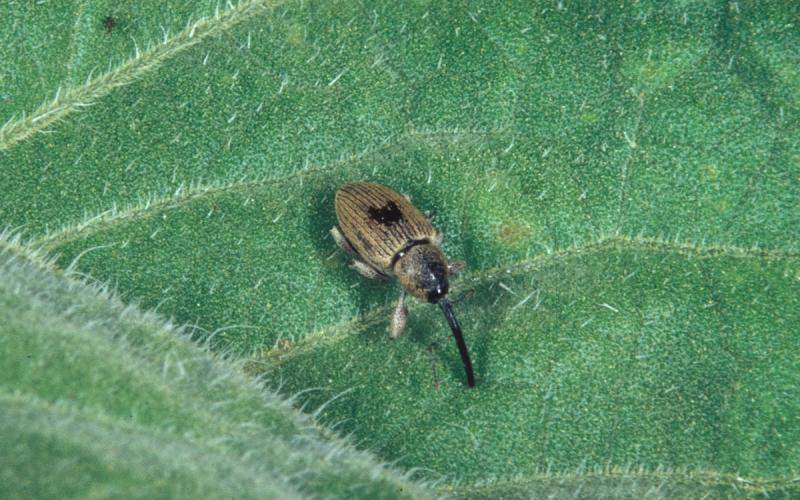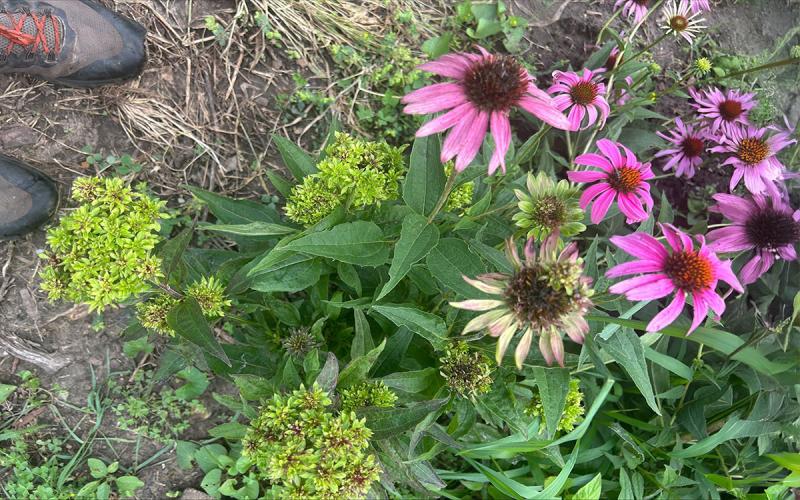Written collaboratively by Eric Jones, Philip Rozeboom, Jill Alms, and David Vos.
Weed management, while almost always a difficult task, can be more complex in sunflowers. The first challenge is a lack of herbicide options. The second challenge is that most of the sunflowers grown in South Dakota are under no-till production systems. Sunflowers should be weed-free (although very difficult to accomplish) from the 3-leaf stage (V3) to flowering (R4-R5) to minimize yield loss potential. Below are some considerations for weed management.
Start clean.
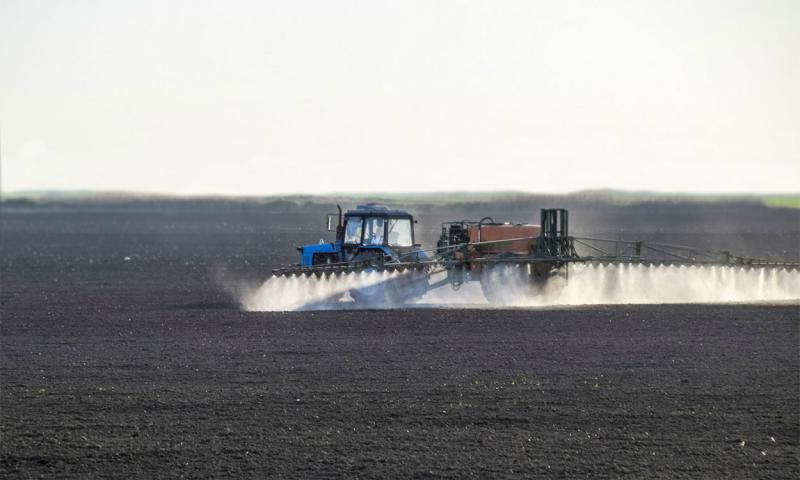
Since most of the sunflower production in South Dakota is under no-till systems, burndown herbicides will be critical to manage weeds that emerged prior to planting. Glyphosate (Roundup) is commonly used for a burndown application but may not be effective due to resistant kochia. Carfentrazone (Aim, Antik, Longbow) and pyraflufen (Vida) are PPO-inhibitors (Group 14) that can be applied for burndown and are effective on kochia (4 inches or less). While these PPO-inhibitors are effective, sole reliance for burndown can lead to the selection of resistant weeds. Kochia resistance to these herbicides has been confirmed in North Dakota. Paraquat (Graxomone) is another viable option for burndown as well. Increased spray volume is critical, and the PPO-inhibitors and paraquat are contact herbicides; coverage is critical for effective control. The herbicides labeled for burndown applications in sunflowers essentially have no soil residual activity. Therefore, it will be important to add an herbicide with soil residual activity to the tank or be timely with the preemergence herbicide application.
A strong preemergence herbicide program is absolutely necessary when growing sunflowers. Since there are not a lot of postemergence herbicide options, not letting weeds emerge will put less reliance on postemergence management and competition with the sunflower. While there are effective preemergence herbicides, most of the herbicides belong to the microtubule-inhibitors (pendimethalin [Prowl]) (Group 3), seedling shoot-inhibitors (S-metolachlor [Dual Magnum]) (Group 15) and PPO-inhibitors (sulfentrazone [Spartan]). Therefore, using premixes with different herbicide groups will help control a broader spectrum of weed species and reduce selection pressure. Additionally, many of these herbicides have different characteristics that determine how active the product is in the soil depending on weather conditions (for example, rainfall: too much or too little). Mixing the different herbicide groups will help hedge against unpredictable weather.
Stay clean.
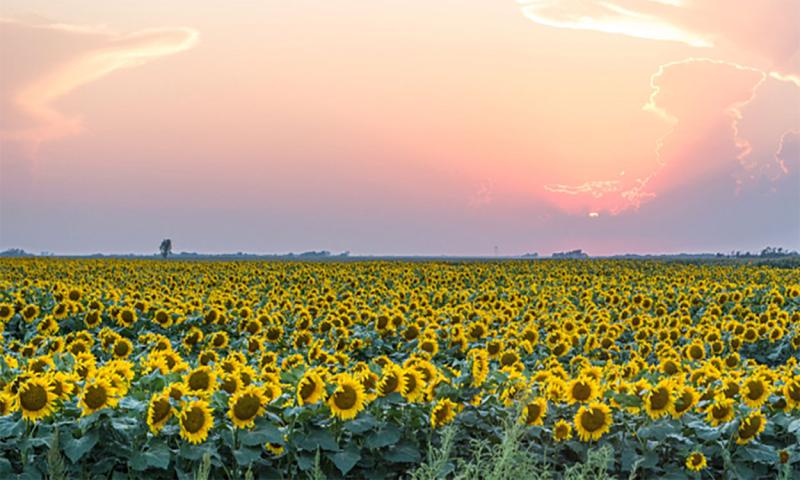
Despite applying a sound preemergence herbicide program, there will likely be some weeds that escape and must be managed postemergence. Grass weeds will be easier to manage in sunflowers compared to broadleaf weeds. The ACCase-inhibitors (Select [clethodim], Assure II [quizalofop], and others) (Group 1) are effective on grass weeds but have no activity on broadleaf weeds. Additionally, many of the preemergence herbicides used in sunflower are very effective on grass weeds.
Many of the sunflower varieties planted in South Dakota are Clearfield or Express, which confers tolerance to Beyond (imazamox) (Clearfield varities) or Express (tribenuron) (Express varities). Although different chemical families of the ALS-inhibitors (Group 2), these two herbicides control similar weed species; the exception is that Beyond has more activity on grass weeds. While the ability to spray these two herbicides on tolerant sunflower varieties aids in weed management, there are weeds that are resistant to these herbicides. Such weeds include kochia and waterhemp. Since there are really no postemergence options (aside from carfentrazone or glyphosate applied with a hooded sprayer) to control ALS-inhibitor-resistant weeds, this should highlight the importance of using a strong preemergence herbicide program and applying a soil residual herbicide at the postemergence application. Adding an herbicide with soil activity will help manage later-emerging weeds to limit yield loss and the amount of seed put back into the soil to be managed in future growing seasons. Try to limit using the same herbicide groups in the pre-and-postemergence applications when possible. While similar to S-metolachlor, pyroxasulfone (Zidua) (Group 15) is only labeled for post-residual applications in sunflower. This herbicide could be a choice if a Group 3 or a different Group 15 herbicide is applied preemergence.
Refer to the latest South Dakota Pest Management Guide: Afalfa and Oilseeds for a complete list of herbicides (and other pesticides) that can be applied to sunflower.
Integrated Tactics

While herbicides are the most effective and efficient way to manage weeds in sunflower, there are other tactics that can be utilized as well. Field selection is important when growing sunflowers. While part of a crop rotation, planting sunflowers in a field with a known history of weed problems may not be a good idea. Select fields that have minimal weed pressure so intensive management does not have to be implemented. Additionally, crop rotation can help by planting a crop in a field with more options for weed management to minimize the weed pressure for the sunflower crop grown in the future. A small grain crop should be included in the crop rotation, as different herbicides can be used to manage weeds, but also the lifecycle of small grain (for example, winter wheat) helps manage weeds by having vegetation present to minimize weed emergence and seed production by imparting competition. While most sunflowers are growing in no-till systems, mechanical tactics should still be a part of sunflower weed management. While hand weeding small, isolated patches of weeds may be difficult due to the sheer size of many of the sunflower fields, mowing can be implemented to manage difficult-to-control weeds (such as kochia) growing in patches. While mowing off crops can minimize the yield potential of the field, very weedy areas likely have already reduced the yield potential and could produce thousands of seeds to be managed in later growing seasons.
